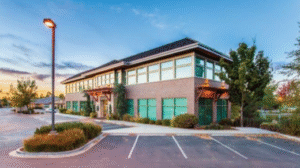Circular Economy Models in Urban Development

Circular Economy Models in Urban Development
Urban development has long been synonymous with linear consumption—take, make, dispose. But what if our cities could thrive on a different model, one that minimizes waste and maximizes resources? Enter the circular economy, a transformative approach that’s reshaping how we think about urban growth and sustainability.
I’ve been fascinated by how circular economy models can revolutionize urban living. From repurposing materials to designing buildings with future adaptability in mind, these models offer a blueprint for cities that are not just sustainable but regenerative.
Let’s dive into how these innovative strategies are paving the way for smarter, greener urban landscapes. For travelers interested in exploring cities that embrace the circular economy and prioritize sustainable development, visit circular economy travel destinations to discover eco-friendly travel options that support regenerative urban growth.
Understanding Circular Economy
A circular economy aims to create a sustainable cycle by continuously reusing materials. Unlike the traditional linear economy, which follows a ‘take, make, dispose’ pattern, a circular economy emphasizes material recovery. It’s about designing products that can be dismantled and reused, ensuring minimal waste.
Key principles of a circular economy include designing for longevity, reusing products and components, and recycling materials into new products. For example, electronic devices designed with modularity in mind allow easy part replacement and upgrades, reducing electronic waste.
In urban development, circular economy models focus on sustainable construction, efficient waste management, and resource regeneration. Buildings are designed to be adaptable, using materials that can be recycled at the end of their lifecycle. Consider the use of reclaimed wood in new constructions, which reduces the need for new raw materials and manages waste effectively.
Urban planning integrates green spaces and renewable energy sources, contributing to a circular system. Green roofs, for instance, support biodiversity, reduce urban heat, and extend the roof’s lifespan. Solar panels generate renewable energy, decreasing reliance on fossil fuels.
Support for local production and consumption reduces transportation emissions and fosters community resilience. Urban farms and local markets promote short supply chains, ensuring that resources remain within the community and reducing the carbon footprint associated with long-distance transport.
Importance of Circular Economy in Urban Development
In urban development, integrating circular economy principles significantly reduces waste. By designing buildings with reusable and recyclable materials, cities can minimize landfill contributions. For instance, using reclaimed wood and recycled metals in construction promotes sustainable practices.
Local economies benefit as well. Emphasizing local production and consumption supports small businesses and reduces transportation emissions. Cities integrating these practices see economic growth coupled with environmental responsibility.
Energy efficiency is crucial. Renewable energy sources, like solar panels and wind turbines, reduce dependency on fossil fuels. Urban spaces designed with renewable energy in mind contribute to a city’s sustainability goals.
Green spaces improve urban living. Incorporating parks and green roofs reduces urban heat islands and enhances air quality. These spaces offer residents recreational areas while supporting local biodiversity.
Waste management transforms under a circular model. Efficient recycling and composting systems reduce the strain on landfills. Cities that adopt these approaches not only manage waste better but also create opportunities for innovation in waste-to-energy solutions.
Resource regeneration plays a pivotal role. Water recycling systems, for example, ensure that urban areas manage water efficiently. Cities can implement rainwater harvesting and greywater recycling to enhance water conservation.
Commitment to circular economy models in urban development enhances sustainability. These practices ensure long-term viability and resilience for urban environments.
Circular Economy Models
Circular economy models redefine urban development by creating sustainable frameworks. These models focus on reducing waste, promoting resource efficiency, and fostering economic sustainability.
Closed-Loop Systems
Closed-loop systems prioritize reuse, recycling, and regeneration of materials in urban settings. These systems aim to design out waste and create continuous cycles of resource use. For example, in construction, materials such as concrete, glass, and metal are reused or recycled to build new structures. Organic waste is also composted to regenerate soil for urban agriculture.
Industrial Symbiosis
Industrial symbiosis involves collaboration between different industries to use each other’s by-products as resources. This approach reduces waste and optimizes resource use by creating interconnected industrial processes. For instance, a city’s heat generated from industrial processes might be used to warm residential buildings, while waste materials from one industry might become input for another.
Product-as-a-Service (PaaS)
Product-as-a-Service (PaaS) shifts from traditional ownership models to service-oriented ones. Urban inhabitants pay for the service a product provides rather than owning the product itself. An example includes bike-sharing systems in cities where users rent bikes on-demand instead of owning them. This model prolongs product life cycles, reduces waste, and enhances resource efficiency.
Case Studies of Circular Economy in Urban Development
Several cities around the world have adopted circular economy models to drive sustainability in urban development. These case studies highlight innovative strategies and policies implemented by leading cities.
Amsterdam’s Circular City Initiative
Amsterdam launched the Circular City Initiative to spearhead the transition to a circular economy. The city prioritizes material reuse and renewable energy. Amsterdam Recycling Stores collect items from residents, refurbishing them for resale. Amsterdam Smart City develops tech solutions supporting material efficiency. The initiative aims to reduce resource consumption by 50% by 2030.
Copenhagen’s Resource Efficient City Strategy
Copenhagen’s Resource Efficient City Strategy focuses on reducing resource waste and increasing recycling rates. The city has implemented widespread waste separation systems, ensuring high rates of material recovery. Copenhagen Turning Waste Into Energy uses waste-to-energy technology to convert municipal waste into electricity. The strategy includes green building certifications emphasizing sustainable construction.
Seoul’s Waste Reduction Programs
Seoul has introduced comprehensive waste reduction programs enhancing the city’s circular economy efforts. The programs include mandatory food waste recycling, drastically cutting landfill contributions. Seoul Reuse Plaza promotes second-hand goods, fixing and reselling items. Seoul ByeByeStandby reduces energy wastage by promoting energy-efficient appliances.
These case studies demonstrate how cities integrate circular economy principles, driving sustainability and resource efficiency in urban development.
Challenges and Opportunities
Exploring circular economy models in urban development presents both challenges and opportunities. This section delves into the barriers hindering implementation and the potential benefits and success factors.
Barriers to Implementation
Several challenges impede the adoption of circular economy models in urban settings:
- Regulatory Hurdles: Existing regulations often favor linear economic practices, creating barriers to adopting circular models.
- Initial Costs: High upfront investment for infrastructure and technology can deter stakeholders.
- Lack of Awareness: Limited understanding among policymakers and businesses about the benefits of circular economy practices.
- Technological Limitations: Inadequate technology for recycling, waste management, and resource optimization hampers progress.
Potential Benefits and Success Factors
Implementing circular economy models offers numerous benefits and critical success factors:
- Resource Efficiency: Reducing material consumption and waste leads to cost savings and sustainability.
- Economic Growth: Creating new business models, such as PaaS, delivers revenue streams and job opportunities.
- Environmental Impact: Lowering emissions and waste improves urban air quality and reduces landfill use.
- Community Engagement: Educating and involving citizens in circular practices fosters a sustainable mindset and collaborative efforts for urban development.
Addressing these challenges strategically enables cities to capitalize on the opportunities presented by circular economy models, driving sustainable urban development.
Future Directions for Circular Economy in Urban Development
Emerging Technologies
Integrating emerging technologies enhances urban circular economy models. Blockchain ensures transparency in waste management, while AI optimizes resource allocation and energy consumption. Real-time data analytics improves decision-making processes. For instance, digital twins simulate urban processes and predict outcomes, increasing efficiency.
Policy Frameworks
Strong policy frameworks support circular economy initiatives. Governments can promote regulations that prioritize waste reduction and material reuse. Incentives, such as tax breaks for businesses implementing circular practices, further encourage adoption. Clear policies streamline the transition to circular systems in urban settings.
Public-Private Partnerships
Collaboration between public and private sectors accelerates circular economy implementation. Municipalities can partner with businesses to develop sustainable infrastructure. Examples include waste-to-energy plants and urban farms. These partnerships pool resources and expertise, creating innovative solutions for urban sustainability.
Community Engagement
Active community engagement ensures the success of circular initiatives. Educational programs raise awareness of circular practices. Community-driven projects, like local recycling schemes and repair cafes, promote participation. Engaging residents fosters a culture of sustainability and empowers individuals to contribute actively.
Scalable Solutions
Scalable solutions are essential for widespread adoption of circular practices. Pilot projects in urban areas test new strategies. Successful initiatives can then be expanded to other cities. Replicable models reduce implementation time and costs, facilitating broader adoption across regions. Examples include urban composting and reuse centers.
Global Collaboration
Global collaboration among cities shares best practices and resources. Networks like the Circular Cities Network enable knowledge exchange. Participation in international agreements, such as the Paris Agreement, reinforces commitment. Collaborative efforts amplify the impact of circular economy models on a global scale.





